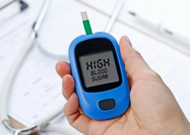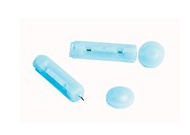

Did you know that over 34 million people in the United States alone live with diabetes? That's a staggering 10% of the population, and the numbers continue to rise.
In this digital age, the landscape of diabetic supplies has transformed, offering innovative solutions to make managing this condition more seamless and effective than ever before. From state-of-the-art blood glucose monitoring systems that provide real-time insights to a plethora of diabetes products designed for convenience and comfort, we're here to guide you through the maze of options, ensuring you have the tools you need to take charge of your well-being.
Whether you're seeking to fine-tune your monitoring routine or seeking new ways to embrace a life without limits, this postis your compass to healthier, more informed, and empowered diabetic coverage.
When it comes to managing diabetes, knowledge truly is power. In this section, we're delving into "The Basics of Blood Glucose Monitoring Systems," demystifying the intricate workings of these vital devices that empower you to take charge of your health.
Let's delve into the essential diabetes products that form the backbone of daily care, enabling you to navigate the challenges with confidence and ease.
When it comes to managing diabetes, precision and convenience are paramount. In this section, we embark on a journey to uncover the key considerations in selecting the perfect diabetes monitoring device. Let's delve into the factors that can make all the difference in your health journey.
To sum up, navigating the realm of diabetes items is crucial for effective diabetes management. This guide has illuminated the significance of blood glucose monitoring systems and other essential products in maintaining a healthy lifestyle for individuals with diabetes.
By understanding the available options, staying informed about technological advancements, and consulting healthcare professionals, individuals can confidently choose the right supplies to ensure better control of their condition and enhance their overall well-being.
There are several reputable diabetic supply companies in the market, each offering a range of products. The "best" company can vary depending on your needs, preferences, and location. It's recommended to research companies, read reviews, and consult with your healthcare provider to find a company that aligns with your requirements.
Yes, many health insurance plans do cover diabetes-related expenses, including diabetic supplies and medications. The extent of coverage varies according to your insurance provider and plan. It's advisable to review your insurance policy or contact your insurance company to understand the extent of coverage for diabetes-related costs.
For some diabetes products, such as insulin and certain medications, a prescription from a healthcare provider is necessary. However, items like blood glucose monitors, lancets, and test strips can often be purchased without a prescription. Always consult your healthcare provider for guidance on which supplies require a prescription.
The frequency of blood sugar monitoring depends on factors like your diabetes type, treatment plan, and overall health. Generally, individuals with type 1 diabetes and those on insulin therapy need to monitor their blood sugar multiple times a day. Those with type 2 diabetes may monitor less frequently, as recommended by their healthcare provider.
While some people may choose to reuse insulin needles or syringes, it's generally not recommended due to the risk of infection, blunting of the needle, and inaccurate dosing. Single-use needles and syringes are designed for one-time use to ensure safety and accuracy. It's best to use a new, sterile needle or syringe for each injection.
Type 1 diabetes is an autoimmune condition where the body's immune system attacks and destroys insulin-producing cells in the pancreas. It usually starts in childhood or adolescence and requires insulin treatment. On the other hand, type 2 diabetes is characterized by insulin resistance and insufficient insulin synthesis process. It's often related to lifestyle factors and can sometimes be managed with diet, exercise, oral medications, or insulin.